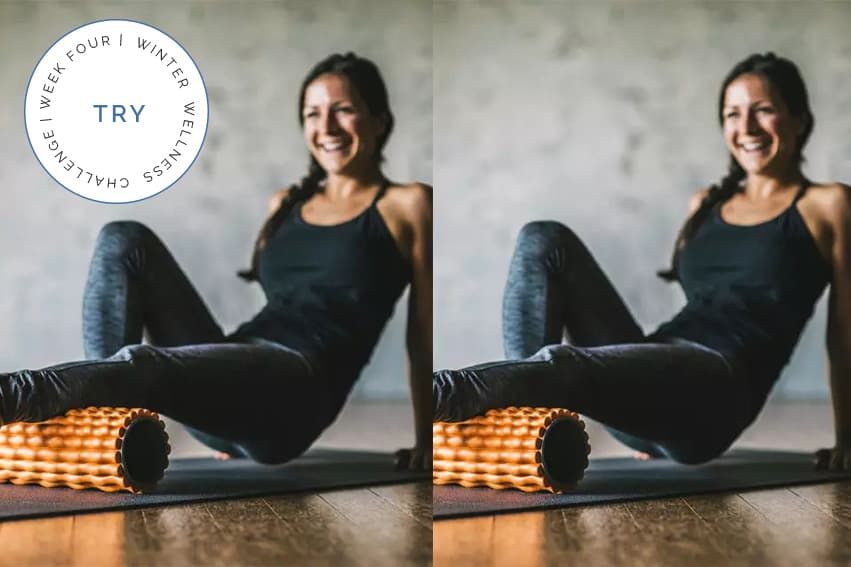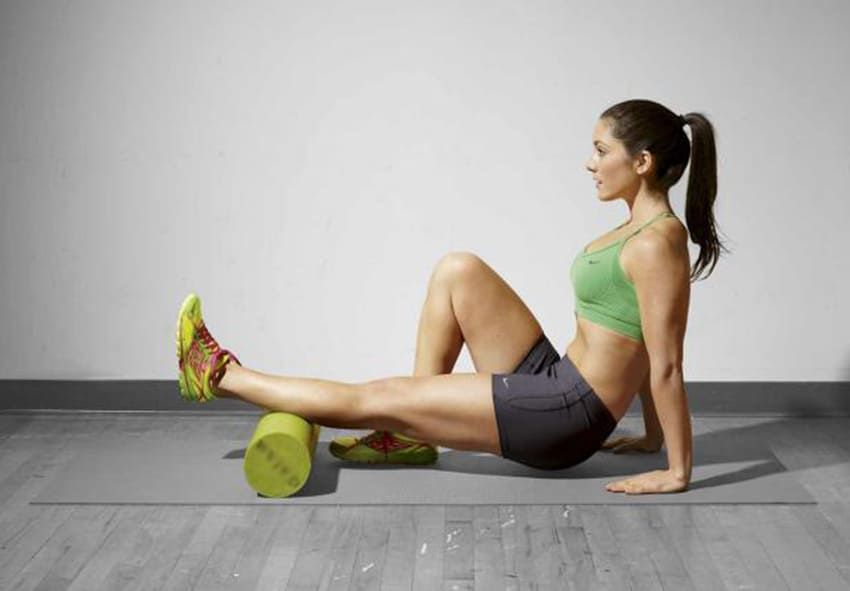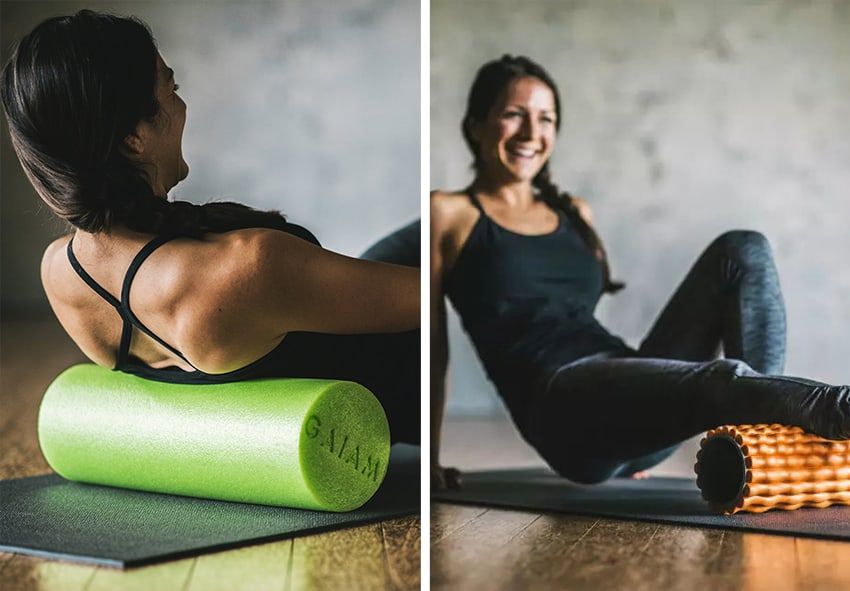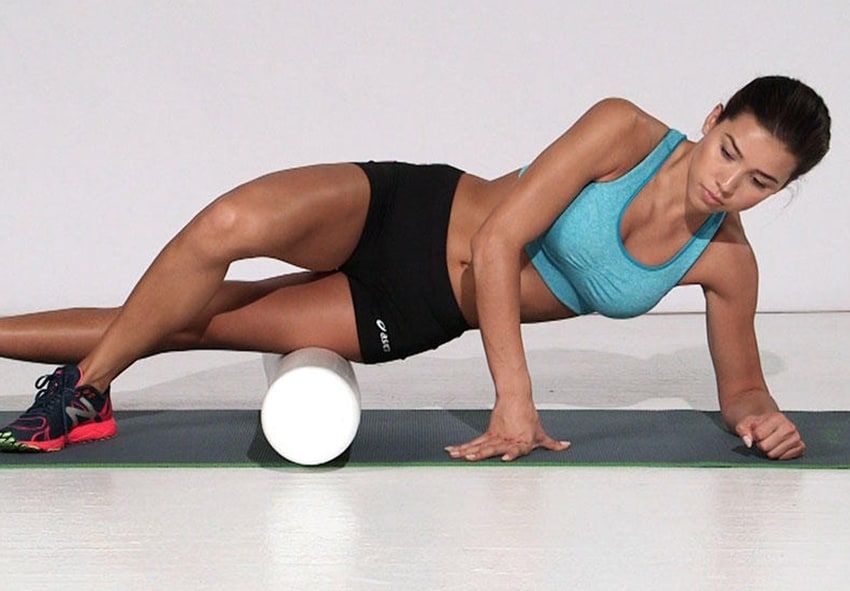
Want to have the benefits of a regular massage without the price tag? Of course you do and regularly using a foam roller is one way to do exactly that.
Foam rolling is a relatively new concept to the wellness and fitness world and after using one regularly for the past year or so, we wanted to share with you the benefits we’ve seen for ourselves and the ins-and-outs of this new wellness practice.
Firstly though, a lot of you are probably thinking that you don’t need to use a foam roller because you’re not a “gym junkie” but in actual fact, everyone, regardless of whether they workout or not, should be regularly using a foam roller. As a society, we are sitting and slouching more than ever before. From sitting down on our daily commute and driving in the car to being at our desks all day and going home to watch TV on the lounge, we’ve become a nation of ‘sitters’ so we need to alleviate the tension and pain that sitting can cause our bodies and to do that, we foam roll. Using a foam roller on a regular basis can provide similar results to that of a masseuse or specialist and the best part is that it’s simple to do and costs you a whole lot less.
By the time you finish reading this post, you will be an expert in all things foam rolling so let’s get started!

A foam roller is a long and cylindrical foam exercise tool used for massaging and fitness that can help to relieve tension, assist in muscle recovery and even reduce cellulite.


As well as reducing tension and pain, foam rolling can offer your body a number of amazing benefits, such as:
- Increased blood flow, which improves the delivery of oxygen during your workout.
- It helps to stretch your body and muscles so you can get an increased range of motion.
- Foam rolling decreases recovery time of workouts and injuries. If you’re foam rolling regularly, it’s less likely that you’re going to get injured because you’re letting your muscles recover after each workout.
- Increased circulation can also help with removal of toxins, which can help to reduce cellulite.
- You can get the benefits of a massage without the price! No longer will you have to pay a massage therapist each time your body is sore from working out. Put your wallet away and save those pennies!
- Reduced inflammation and joint stress.

You’ll find that almost anyone who regularly works out should be using a foam roller and it should be incorporated into nearly every workout because it’s been proven to improve a range of motion, decrease neuromuscular exhaustion and decrease post-exercise soreness.
Besides gym-goers, experts also encourage anyone who sits at a desk for their 9-to-5 to regularly use a foam roller because it releases any muscle tension that can be caused from sitting down all day. Additionally, think of all the times you look down at your phone or a computer. This constant movement creates tension and pain in your back and neck so one way to relieve that stress is to regularly use a foam roller.
We would also recommend checking with your doctor or health care professional before starting to use one.

Perform foam roller sessions when your muscles are warm (like after a shower) or after a workout. You want to release any tension that has been created during your workout. We find it works well just after a shower and before bed. The constant motion created from rolling can relax the body, which can help you to fall asleep easier.


We like using our foam roller in the living room whilst listening to one of our favourite podcasts, or Spotify playlists at the same time.

Everyone is different so we would recommend confirming with your trainer, instructor or healthcare professional first to make sure your foam rolling routine suits you but there are a few key points you need to know when foam rolling:
- Position the roller under the soft tissue area you want to release or loosen.
- Gently roll your body weight back and forth across the roller while targeting the affected muscle.
- Move slowly and work from the centre of the body out toward your extremities.
- If you find a particularly painful area (also known as a trigger point), hold that position until the area softens.
- Focus on the areas that are tight or have reduced range of motion.
- Roll over each area a few times until you feel it relax. Expect some discomfort and it is natural if it feels quite tender at first.
- Stay on soft tissue and avoid rolling directly over bone or joints, like your knees, elbows or lower back.
- Keep your first few foam roller sessions short – about 15 minutes is all you need.
- Drink plenty of water after a session, just as you would after a sports massage because you need to rehydrate yourself.
We have found using foam rolling apps to be really helpful if you want some extra guidance. You can always try Foam Rolling or Foam Roller Techniques
To get your hands on a foam roller, simply click here.



